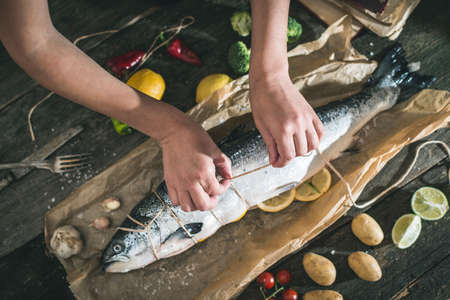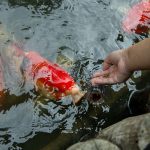Introduction to Summer Saltwater Fishing
Saltwater fishing in the United States offers an ever-changing landscape, with each season bringing its own set of challenges and opportunities. While spring and fall are known for migration runs and winter often means slower action, summer stands out as prime time for both inshore and offshore anglers. With longer daylight hours, warmer water temperatures, and a surge in baitfish activity, summer unlocks access to a wider range of species and hotspots along America’s coasts. This unique season requires anglers to fine-tune their gear choices based on the distinct demands of inshore versus offshore fishing. Understanding these differences is key to maximizing your success and enjoyment during the busy summer months.
2. Must-Have Inshore Tackle for Summer
When summer heats up along the U.S. coasts, inshore anglers set their sights on species like redfish, snook, and speckled trout. Having the right gear is crucial for maximizing your success and enjoyment out on the water. Below is a comprehensive breakdown of essential inshore tackle specifically tailored for summer fishing conditions.
Rods: Length & Power Matter
| Target Species | Rod Length | Power/Action | Recommended Material |
|---|---|---|---|
| Redfish | 7–76″ | Medium to Medium-Heavy/Fast | Graphite or Composite |
| Snook | 7–8 | Medium-Heavy/Fast | Graphite/Carbon Fiber |
| Speckled Trout | 66″–7 | Medium-Light to Medium/Fast | Graphite |
Reels: Smooth Drag & Saltwater Toughness
A quality spinning reel sized 2500–4000 (depending on rod and target species) is ideal for most summer inshore applications. Look for sealed bearings, corrosion-resistant materials, and a smooth drag system—essential features when fighting hard-pulling fish in brackish or salty environments.
Main Line Choices: Mono vs. Braid vs. Fluoro
| Line Type | Pound Test Range | Best Use Case | Notes |
|---|---|---|---|
| Braided Line | 10–20 lb | Casting distance, sensitivity, heavy cover | Add fluorocarbon leader for stealth near structure. |
| Monofilament Line | 8–15 lb | Softer presentation, beginners, topwater lures | Easier handling, more stretch than braid. |
| Fluorocarbon Leader | 15–25 lb (leader) | Toughness & low visibility around rocks/docks/mangroves | Tie to main line with a strong knot (e.g., FG or Uni-to-Uni). |
Terminal Tackle Must-Haves for Summer Inshore Fishing:
- Hooks: Circle hooks (size 1/0–3/0) for live bait; jig heads (1/8–1/4 oz) for soft plastics.
- Lures: Topwaters at dawn/dusk; paddle-tail swimbaits; suspending twitch baits; gold spoons.
- Weights: Egg sinkers or split shots for live bait rigs in current.
- Pliers & Tools: Saltwater-grade pliers, line cutters, and dehookers.
- Tackle Storage: Waterproof utility boxes to keep your gear organized and rust-free.
This inshore checklist ensures you’re rigged and ready for anything from shallow flats to mangrove shorelines during the height of summer action. With the right combination of rods, reels, lines, and terminal tackle, you’ll be well-prepared to land those trophy fish all season long.
![]()
3. Offshore Gear Essentials to Beat the Summer Heat
When summer rolls in, offshore fishing heats up with pelagic action—think mahi-mahi, tuna, and marlin cruising the bluewater. To make the most of your offshore trips, having the right heavy-duty gear is non-negotiable. Here’s a breakdown of essential tackle and equipment designed to withstand big fights and harsh saltwater conditions.
Heavy-Duty Offshore Rods & Reels
Offshore fishing demands robust setups capable of handling trophy fish and long runs. Opt for rods rated for 30-80 lb lines with strong backbones and moderate-fast actions. Pair them with high-capacity conventional or spinning reels that offer smooth drags and corrosion resistance.
| Gear Type | Recommended Specs | Best For |
|---|---|---|
| Rods | 6’6”–7’6”, 30–80 lb class, fast action | Mahi-mahi, Tuna, Marlin |
| Reels (Conventional) | High line capacity (300+ yds), max drag 25+ lbs | Trolling & Chunking |
| Reels (Spinning) | Larger bodies (6000–14000 size), sealed bearings | Casting poppers or jigs |
Leader Material & Terminal Tackle
The right leader makes all the difference when facing sharp-toothed predators or wary pelagics. Use fluorocarbon leaders from 60–130 lb test for abrasion resistance and stealth. Swivels, crimps, and high-strength snap clips are also key for rigging baits and lures securely.
Essential Leader & Terminal Gear List:
- Fluorocarbon leader: 60–130 lb test (length: 4–10 ft)
- Ball-bearing swivels: 100–200 lb rating to reduce line twist
- Copper/aluminum crimps for heavy mono/fluoro connections
- Snap/swivel clips for quick lure changes
- Circle hooks (8/0–12/0) for live bait rigs—required for some pelagic species in U.S. waters
Lure Selection for Pelagics
Your lure arsenal should match local forage and fish preferences. Trolling lures like skirted ballyhoo rigs, jet heads, and cedar plugs work wonders on fast-moving mahi-mahi or tuna. Large soft plastics and topwater poppers are favorites when fish are feeding near the surface.
| Lure Type | Recommended Size/Color | Target Species |
|---|---|---|
| Trolling Skirts/Feathers | 6”–12”, blue/white, pink/chartreuse combos | Mahi-mahi, Tuna, Wahoo |
| Cedar Plugs/Jet Heads | 5”–8”, natural wood or metallic colors | Tuna, Marlin, King Mackerel |
| Poppers/Stickbaits | 7”+, bold patterns (mullet, flying fish) | Dorado (Mahi-mahi), Tuna, Sailfish |
| Diving Plugs/Jigs | 4 oz+, sardine/mackerel imitations | Tuna, Grouper (deep drop) |
Pro Tip:
Always rinse your gear with fresh water after every trip to prevent corrosion and prolong its life. Having backup rods and reels rigged ensures you’re always ready when that school of tuna blows up behind the boat!
4. Cool Gadgets and Accessories for the Season
When it comes to summer saltwater fishing, having the right gadgets and accessories can make or break your day on the water. American anglers know that comfort, safety, and convenience are just as important as the rods and reels themselves. Below, we highlight some essential gear that should be on every inshore and offshore summer tackle checklist.
Sun Protection: Stay Safe Under Intense Rays
Summer sun can be brutal, especially during long hours spent fishing in open water. Make sure you’re fully protected with:
- High-SPF Sunscreen: Water-resistant formulas designed for anglers.
- Performance Fishing Shirts: Lightweight, UPF-rated, moisture-wicking shirts keep you cool and shielded from UV rays.
- Wide-Brim Hats & Neck Gaiters: Essential for face and neck coverage; look for vented options for extra comfort.
- Polarized Sunglasses: Reduce glare off the water while protecting your eyes from harmful rays.
Keep It Cool: Hydration and Food Storage
No one wants their drinks warm or food spoiled under a blazing sun. Proper hydration solutions and coolers are must-haves for both inshore and offshore trips. Here’s a handy comparison:
| Accessory | Inshore Benefits | Offshore Benefits |
|---|---|---|
| Soft-Sided Cooler Bags | Lightweight, easy to carry on small boats or kayaks | Good for quick access, fits under seats |
| Hard-Sided Marine Coolers | Might be overkill but useful for group outings | Keeps ice longer, doubles as extra seat or cutting board |
| Insulated Water Bottles/Jugs | Keeps water cold all day, fits into cup holders | Larger jugs ideal for extended trips offshore |
Pro Tip: Freeze water bottles ahead of time so they double as ice packs!
Tactical Tools & Tech Gadgets
The right tech can enhance your fishing experience whether you’re close to shore or miles out at sea. Consider adding these to your summer arsenal:
- Digital Fish Scales & Grippers: For quick measurements and safe handling of big catches.
- Bait Aerators: Keep live bait fresh in the heat.
- Portable GPS/Fish Finder Combos: Handheld units provide navigation and fish location assistance, especially valuable offshore.
American Summer Fishing Must-Haves
The gear you bring reflects not just practicality but also a sense of community—sharing cold drinks, swapping sunscreen tips, and comparing gadgets is part of what makes saltwater fishing an American summer tradition. Stock up on these seasonal essentials before your next trip for comfort, safety, and a great time on the water.
5. Tackle Box Organization and Maintenance Tips
Staying organized is crucial for success in summer saltwater fishing, whether youre chasing redfish along the inshore flats or hunting tuna offshore. The heat, humidity, and salt spray can wreak havoc on gear if not properly managed. Here’s how to keep your tackle box neat, your gear protected, and everything within quick reach for those fast-changing summer conditions.
Beat the Heat: Preventing Salt Buildup and Corrosion
Summer means increased risk of salt accumulation and corrosion. After every trip, rinse all lures, hooks, and terminal tackle with fresh water and let them dry completely before storage. Use silica gel packs or moisture-absorbing products inside your tackle trays to combat humidity. For metal tools and pliers, apply a light coat of corrosion inhibitor spray.
Quick Reference Table: Summer Maintenance Checklist
| Task | Frequency | Best Practice |
|---|---|---|
| Freshwater Rinse | After Every Trip | Rinse all gear thoroughly to remove salt residue. |
| Dry Completely | Every Time Before Storage | Allow gear to air dry; avoid sealing damp items. |
| Corrosion Inhibitor Application | Weekly or as Needed | Spray on metal parts and exposed hardware. |
| Tackle Tray Inspection | Monthly (or Bi-Weekly in Summer) | Check for rust, replace damaged foam/dividers. |
| Bait/Lure Inventory Check | Before Each Trip | Restock essentials; replace sun-faded soft plastics. |
Organizing for Quick Access: Inshore vs Offshore Setups
Create dedicated trays or boxes for inshore and offshore fishing. Use waterproof labels and color-coded containers to instantly grab what you need—this is especially helpful during hectic bites or when conditions change quickly. Separate soft plastics from hard baits, and use small zip bags for leader materials to avoid tangles.
Tackle Box Layout Ideas
- Main Compartments: Group by lure type (jigs, plugs, spoons) and target species.
- Pocket Trays: Store terminal tackle (swivels, snaps, hooks) by size for both inshore finesse and offshore heavy-duty setups.
- Waterproof Pouch: Keep critical tools (pliers, line cutters) accessible for emergencies.
- Bait Wallets: Organize pre-rigged leaders or rigs for fast deployment when the bite is on.
Pro Tip:
Avoid overpacking! Excess weight makes it harder to find what you need fast—and increases the risk of losing expensive gear overboard. Stick to essentials based on your trip plan and always double-check your checklist before heading out this summer!
6. Regional Considerations and Local Regulations
When assembling your summer saltwater tackle checklist, it’s essential to recognize that gear requirements and fishing techniques can vary widely across U.S. coastal regions. From the Atlantic to the Gulf Coast and Pacific shores, local environments, target species, and fishing regulations all play a role in shaping your tackle choices for both inshore and offshore adventures.
Regional Gear Adjustments
| Region | Inshore Tackle Adjustments | Offshore Tackle Adjustments |
|---|---|---|
| Northeast (e.g., New England) | Lighter spinning gear for striped bass, bluefish; bucktail jigs, soft plastics | Heavier trolling setups for tuna; wire leaders for bluefin; deep-diving plugs |
| Southeast (e.g., Florida) | Medium-light setups for snook, redfish; shrimp imitations, popping corks | Heavy-duty rods for mahi-mahi, sailfish; live bait rigs, skirted trolling lures |
| Gulf Coast (e.g., Texas, Louisiana) | Casting rods for speckled trout, flounder; topwater lures, jig heads | Bottom rigs for snapper, grouper; heavy sinkers, circle hooks |
| West Coast (e.g., California) | Sensitive rods for halibut, calico bass; swimbaits, drop-shot rigs | Long-range setups for yellowtail, tuna; iron jigs, fluorocarbon leaders |
The Importance of Local Knowledge and Regulation Awareness
No matter where you fish along America’s coasts, local knowledge is key to success. Bait preferences, effective lure colors, and seasonal migrations often differ from one state—or even one bay—to another. Equally important is staying current on local fishing regulations. Many states enforce closed seasons for certain species or restrict gear types to protect fish populations during spawning or migration.
Key Reminders:
- Check state agency websites: Review up-to-date rules from the appropriate Department of Fish and Wildlife before heading out.
- Understand seasonal closures: Some waters may close entirely or partially to specific types of fishing during summer months.
- Gear restrictions: Certain areas may limit hook sizes, prohibit treble hooks, or require circle hooks to minimize bycatch and protect sensitive species.
- Licensing: Ensure you have the correct fishing license for your region and target species—these can differ between inshore and offshore zones.
Pro Tip: Join local angler groups or visit tackle shops to get insider info on hot baits and any recent regulation changes—they’re often the first to know!
The bottom line: Tailoring your summer saltwater gear to your specific region—and keeping up with evolving regulations—not only boosts your chances of success but also helps preserve America’s incredible coastal fisheries for future generations.


